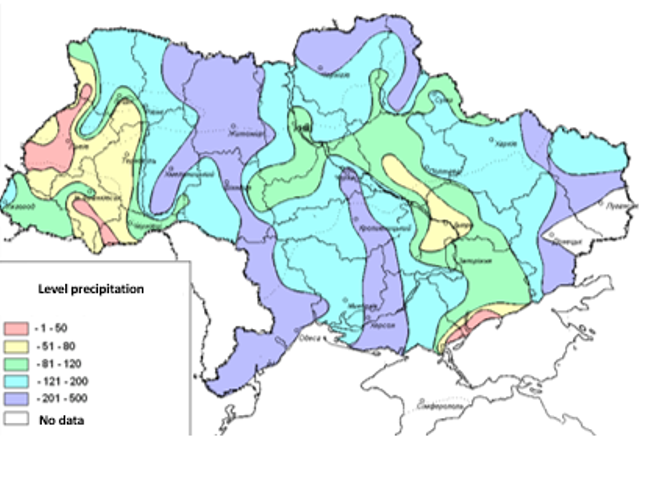In the second and third ten-day periods of May, the weather in Ukraine was determined by active synoptic processes, mainly rainy weather was observed, in many areas with gusty winds, showers and sometimes hail. The temperature regime was moderate, on average close to the norm, in the southwestern regions – below the norm.
The average regional ten-day air temperatures in most regions turned out to be close to the norm, in the Chernihiv, Kyiv, Volyn, Lviv, Transcarpathian, Chernivtsi, Vinnytsya, Odesa regions – 1.2-2.1 °C lower, in the Luhansk and Donetsk regions – by 1.1-1.2 °C above it and ranged from 13.8 °C in the west to 19.1 °C in the southeast. The maximum air temperature increased to 23-28 °С, in the eastern, Sumy, Poltava, Dnipropetrovsk, Zaporizhzhya, Kherson and Mykolayiv regions – up to 29-31 °С.The minimum air temperature on the coldest nights dropped to 2-7 °С, and in the Kherson, Zaporizhzhya and Donetsk regions – up 8-10 °С.
Precipitation of varying amounts and intensity was observed for two ten-day periods throughout the country. The average regional amount of precipitation in the Mykolayiv, Cherkasy, Kyiv, Khmelnytsky, Chernivtsi and Ivano-Frankivsk regions for ten days was mainly 128-165% of the norm (37-58 mm), in the Vinnytsya and Zhytomyr – 207-219% of the ten-day norm (56-59 mm). In the Rivne, Volyn, Lviv and Transcarpathian regions the number did not exceed 55-71% of the norm – 16-28 mm. The smallest amount of precipitation for the entire period was noted in the Donetsk, Luhansk and Zaporizhzhya regions – 33-48% of the ten-day norm (7-10 mm). In the rest of the country, the average precipitation was close to the ten-day norm or corresponded to it (18-26 mm).

Agrometeorological conditions in mid to late May were satisfactory. In most areas of the country soil moisture reserves remained at a sufficient level under all crops. Only in some areas of the southern regions there was decrease to critical indicators for this period. However, after determining the amount of productive moisture in the soil, significant rains took place in the southern and southeastern regions, improved moisture reserves in all soil layers. Due to the relatively cool rainy weather, a slow accumulation of effective heat continued, which was not a favorable factor for the development of thermophilic crops.